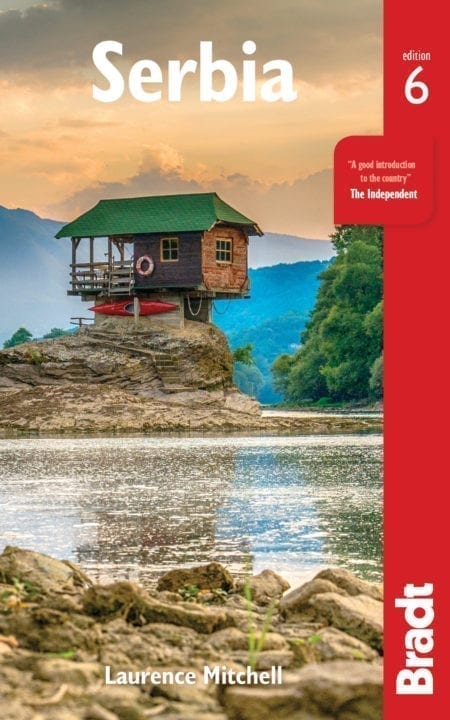The town of Subotica, close to the Hungarian frontier in northern Serbia, is home to a remarkable array of Art Nouveau architecture and design. While the gaudy elegance of this middle European secessionist style might not be to everyone’s taste, it remains a captivating and unmissable feature of the townscape.
Town hall (Gradska kuća)
The Art Nouveau town hall (Gradska kuća), built in 1908–10, is easily the town’s most impressive building even if opinions on its striking style remain somewhat divided. With fancy gables and towers, patterned brickwork and gaudy colours, it is an architectural mishmash of styles that could be said to verge on the tasteless.
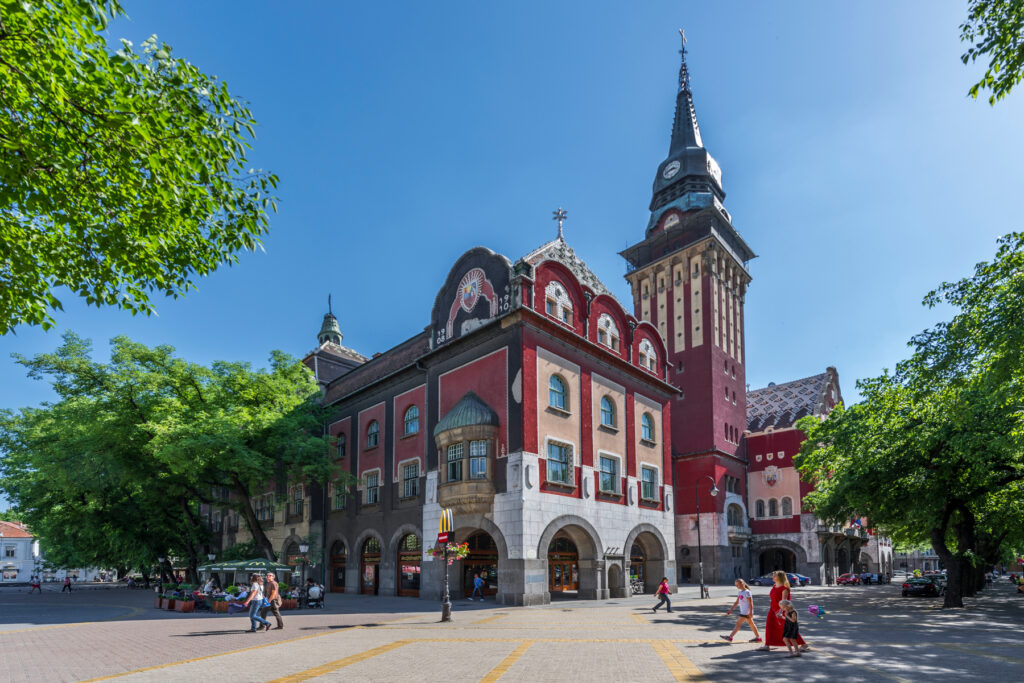
The rhythm of its design might be described as heavily syncopated – frenetic even – but what it lacks in harmony it makes up for with sheer cheerfulness. As well as the town’s administrative offices, the building houses several banks, restaurants, gift shops and the municipal museum.
It is possible to take a tour up to the town hall’s 45m clock tower. Departures are at noon from Tuesday to Friday. You are supposed to have a minimum group of five persons but they seem to be quite flexible about this. There is a small entrance charge to the watchtower. It is a steep climb but from the top you are rewarded with a marvellous view over the town and surrounding countryside. Telescopes are provided for a closer look at the world below.
National Theatre
Facing the town hall is the National Theatre which originally dates from 1854, making it one of the oldest theatres in the country. Because of serious structural damage two-thirds of the original Neoclassical building was demolished in 2007 to allow a reconstruction to be erected on the site.
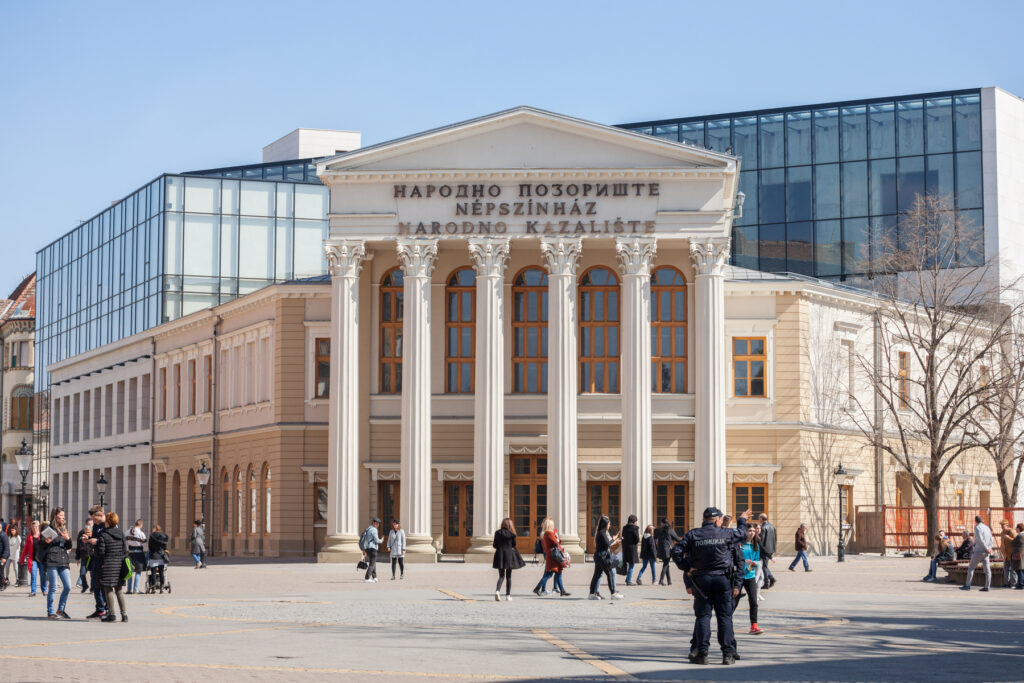
The rest of the central zone surrounding the theatre is contemporary with the town hall and several other examples of the Art Nouveau/secessionist style can be seen along the pedestrian street of Korzo, such as the building that now houses the Continental Bank building, which has heart shapes around the windows and painted shutters on the upper floor.
Town fountain
Behind the town hall, in the park that merges into Trg Republike, is a large fountain in an electric shade of cobalt blue, which is especially striking when illuminated at night.
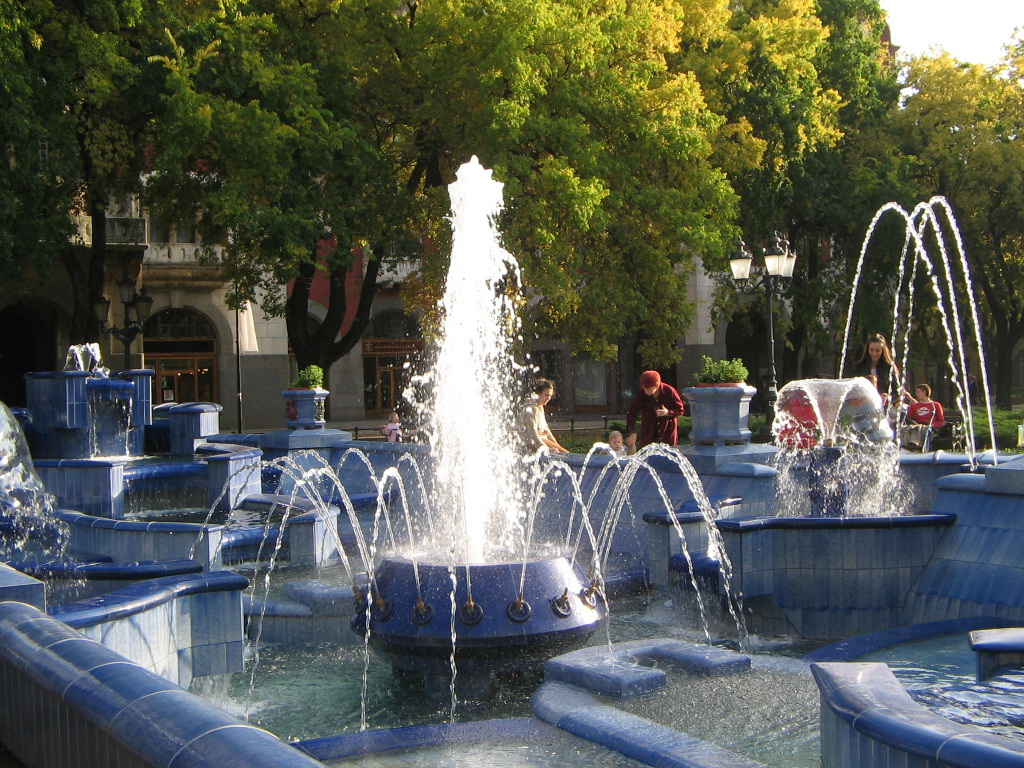
Not for the first time in the town, it seems as if the hand of the Catalan maverick, Gaudí, has been at work here but the fountain is a fairly modern addition to the urban landscape and was designed in 1985 by the architect Svetislav Vičena. The brilliant blue ceramic tiles come from the Zsolnay porcelain factory in Pécs, Hungary.
Synagogue
There are more secessionist buildings nearby at the northern end of Dimitrija Tucovića but the most important remaining edifice in this style is the imposing synagogue that stands alone close to the town’s market area.
The synagogue (1902), on the south side of Trg Jakaba i Komora, was one of the first Art Nouveau buildings to be constructed in Subotica, designed by Dezsó Jakab and Marcell Komor who were responsible for several other buildings in the town including the town hall.
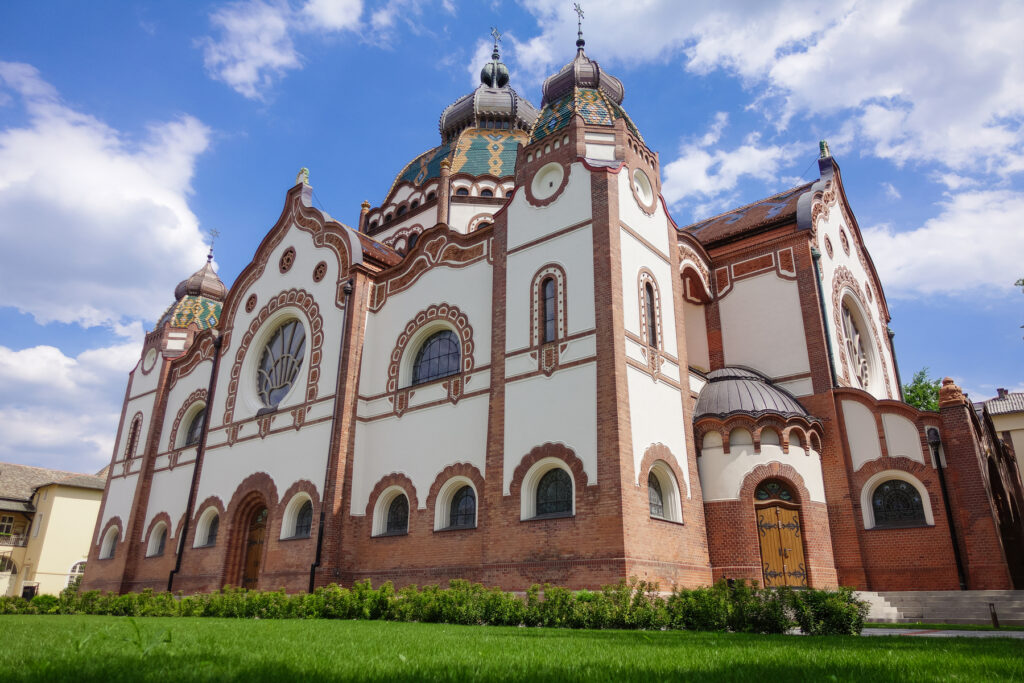
The architects have recently been honoured in the renaming of the square, which is now known as Trg Jakaba i Komora. The temple has a large green hexagonal dome, with curved gables and large rose windows that are crowned by smaller ones with Star of David brickwork. Now that virtually all of Subotica’s Jewish community have gone – either killed during World War II or as migrants to Israel – the building is rarely used and it is starting to look run-down.
Cathedral of St Theresa of Avila
The twin-towered Catholic Cathedral of St Theresa of Avila (Katedrala Svete Terezije Avilske) is located close to Subotica’s marketplace. The cathedral was built in two separate stages at the end of the 18th century and was the tallest building in the town before the construction of the town hall.
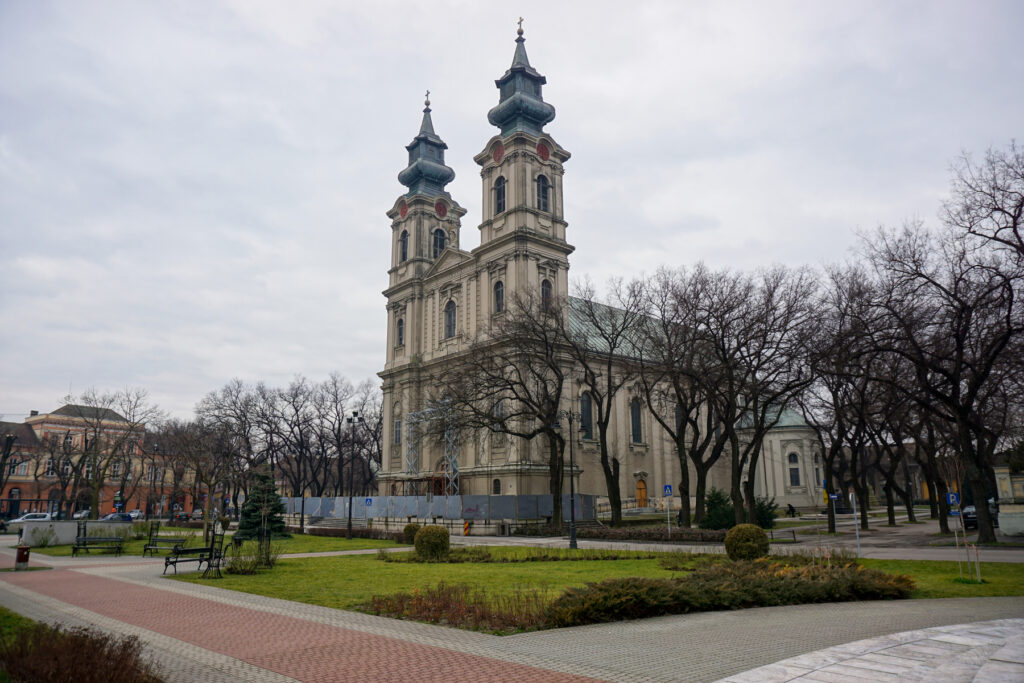
In the churchyard is an interesting statue of the Holy Trinity that shows God the Father and Jesus atop a pillar with a radiant sunburst above. Beneath them is the Virgin Mary surrounded by a group of four angels. This 1815 monument formerly stood in front of the town hall.
Ferenc Raichle mansion
On the other side of town near the railway station is perhaps the best example of Art Nouveau architecture in the entire country, the 1904 Ferenc Raichle mansion, which is home to the Artistic Encounters Modern Art Gallery.
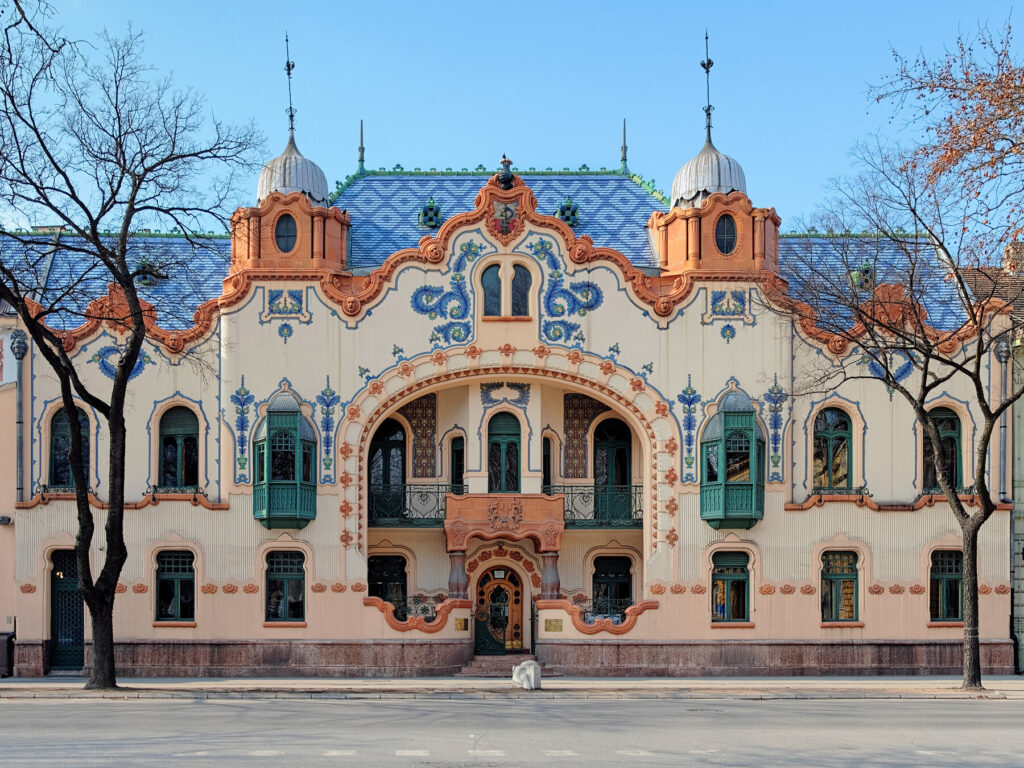
Once again, it seems like it came straight from the sketch pad of Gaudí but it is, in fact, the work of the eponymous Ferenc Raichle, who was also responsible for the City Library and the grammar school. Originally designed as a dwelling house, it has now found new life as a gallery of contemporary art.
More information
For more information, check out Laurence Mitchell’s guide:
